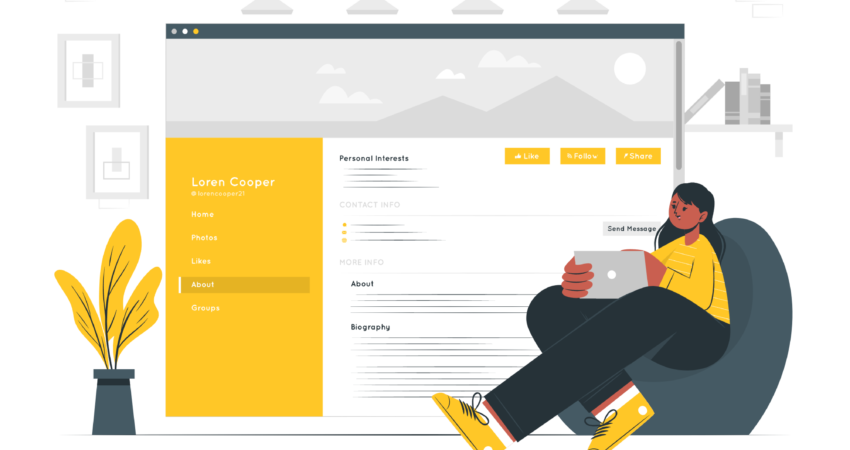
Manmeet Singh
- November 9, 2024
- 5 min read
- Marketing Automation
- Blog
I. Introduction
II. Role of Marketing Automation in Lead Nurturing and Conversion
III. Key Advancements in Automation Technology
IV. Core Features in Advanced Automation Tools for Driving Conversions
V. Impact of Marketing Automation on Campaign Effectiveness
VI. Best Practices for Implementing Effective Automated Email Workflows
VII. Conclusion
I. Introduction
In the fast-evolving digital landscape, marketing automation has become indispensable for businesses aiming to drive efficiency and revenue. Among its many applications, automated email workflows stand out as a key strategy for nurturing leads. Automation enables timely, relevant outreach that moves prospects closer to conversion. Here’s a look at how advancements in marketing automation are enhancing email workflows, making them more sophisticated and effective for lead nurturing and conversions.
II. Role of Marketing Automation in Lead Nurturing and Conversion
Lead nurturing is more than one-off interactions; it’s about guiding prospects through each stage of the buying journey with relevant, timely content. Marketing automation makes this process seamless by responding to user behaviors and preferences across the buyer’s journey—from awareness to decision. With email workflows at the center, automation tools ensure that leads receive the right information at each touchpoint, increasing engagement and driving conversions.
III. Key Advancements in Automation Technology
Automation tools today offer increasingly advanced features that enhance targeting, personalization, and workflow efficiency:
- AI and Machine Learning Integration: AI-powered automation analyzes data in real-time, predicting behaviors and adjusting workflows for optimal impact. Machine learning enables continuous improvement, ensuring each email resonates with recipients.
- Improved Segmentation and Targeting: Modern tools break down audiences based on behavioral and psychographic data, allowing for precise targeting. This segmentation ensures messages are timely and relevant, driving deeper engagement.
- Personalization with Dynamic Content: Dynamic content lets marketers tailor emails based on individual actions and preferences. As a result, subscribers receive information that aligns with their unique journey, increasing the likelihood of conversion.
IV. Core Features in Advanced Automation Tools for Driving Conversions
- Smart Segmentation: Behavioral and demographic segmentation provides a deeper understanding of audience needs, ensuring that each email is highly targeted. With better segmentation, marketers can deliver content that resonates, fostering stronger engagement.
- Advanced Personalization: By leveraging past behaviors, automation tools can customize each email to reflect the recipient’s interests and needs. This goes beyond using first names—it’s about recommending content, products, or offers that match the user’s journey, enhancing relevance and boosting conversions.
- A/B Testing and Optimization: Testing subject lines, visuals, and CTAs ensures email performance improves over time. A/B testing allows marketers to make data-driven decisions that refine each campaign, optimizing for better results.
- Lead Scoring and Qualification: Lead scoring assigns value to leads based on engagement, helping prioritize high-quality prospects. By focusing on leads with the highest potential for conversion, marketing teams can deploy resources efficiently.
- Predictive Analytics and AI: Predictive models powered by AI anticipate user behavior, enabling optimized timing and content for each email. This ensures subscribers receive emails when they’re most likely to engage, aligning with their buying journey.
V. Impact of Marketing Automation on Campaign Effectiveness
Marketing automation has significantly increased email marketing’s effectiveness by providing:
- Enhanced Efficiency: Automation removes manual processes, allowing teams to focus on high-value tasks like strategy and content.
- Consistency and Timeliness: Automated workflows ensure leads receive consistent communication, keeping them engaged and aligned with the brand.
- Resource Optimization: Automating repetitive tasks allows for scalability without sacrificing personalization or engagement quality.
- Data-Driven Results: Automation tools offer detailed analytics, empowering marketers to assess campaign performance and optimize based on real-time data.
VI. Best Practices for Implementing Effective Automated Email Workflows
- Know Your Audience: Detailed segmentation and persona mapping are essential for resonant workflows. By understanding your audience, you can deliver content that directly addresses their needs and preferences.
- Create Content Aligned with the Buyer’s Journey: Each email should deliver value relevant to the recipient’s stage in the journey. Use content that educates early-stage leads and encourages decision-making for later-stage prospects.
-
Balance Automation with a Human Touch: While automation drives efficiency, personalized touches and responsiveness enhance the customer experience and sustain engagement.
-
Test and Refine Continuously: Ongoing A/B testing and analysis keep workflows relevant as customer behaviors evolve. Continuous iteration ensures that automated campaigns remain effective.
VII. Conclusion
Marketing automation has redefined email marketing workflows, making lead nurturing and conversions more precise and effective. By leveraging AI, personalization, and predictive analytics, businesses can guide leads seamlessly through the buyer’s journey. As automation technology advances, the potential for optimized, impactful email marketing grows—making it crucial for businesses to stay updated to maximize their competitive edge.
The following posts may interest you –
Top HubSpot Inbound Marketing Strategies for Lead Generation
FAQs
Marketing automation improves lead nurturing by allowing marketers to send targeted emails based on a lead’s behavior and preferences, guiding them through the buyer’s journey effectively.
Automated email workflows are a series of pre-scheduled emails that are triggered based on specific user actions or times. They help deliver relevant information to leads at each stage of the buying journey.
Lead scoring ranks leads based on their engagement level, helping marketers prioritize high-quality leads for more focused nurturing, which increases the chances of conversion.
A/B testing helps marketers test different email elements (like subject lines or CTAs) to see what resonates best, allowing continuous improvement in engagement and conversion rates.
Marketing automation tools provide insights into what content resonates, what workflows perform best, and where improvements are needed, allowing marketers to refine future campaigns for better results.
















